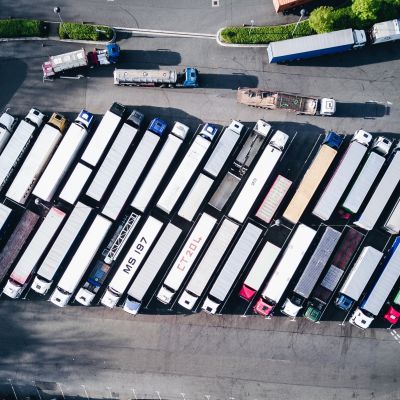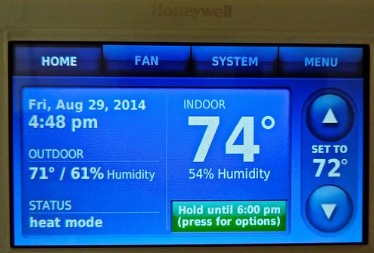How to Reduce Fleet Costs With These 5 Tips

As manager of a fleet, one of your primary responsibilities is to keep costs down. The cost of running a fleet of company vehicles is likely to be one of the most significant expenses that a business has to deal with. In this article, we look at some of the ways to keep the cost of running a fleet down.
#1 Choose your fleet acquisition method carefully
The biggest expense associated with running a fleet is the cost of acquiring the vehicles. Most businesses choose to either lease their vehicles or purchase them outright. Both of these options have their pros and cons. Buying the vehicles outright is a massive outlay of money, which can be difficult in the early stages of building your business and may involve you having to take out some sort of loan to cover the costs.
The vehicles that you own outright are a depreciating asset. This means that they will lose value as soon as they leave the forecourt, and are liable to fluctuate so may not always be the best way to allocate funds.
If it is not critical that you have outright ownership of your fleet, you may want to consider leasing as an alternative.
There has been a shift towards this sort of vehicle acquisition because it is much easier to budget for and more than likely gives you access to a newer and wider range of vehicles than you might should you purchase outright.
#2 Manage fuel costs
Fuel costs can be a significant expense – after the price of the vehicle itself this is usually the biggest spend, and if you can reduce this or manage it better, you will be well on your way to making big savings. One way of doing this is by signing up to a fuel card provider such as Watchcard.
These cards work in a similar way to credit cards but are for fuel and other associated costs, such as oil and washer fluid. They allow you to accurately record how much you are spending on fuel and when and where your employees are filling up. This gives you much more control over your fuel management.
They can also be used as a way of detecting fraud. It prevents your drivers from claiming for more fuel than they have used or filling up vehicles that are not part of your fleet. Using a fuel card may also help you to cut down on your admin costs, as there will be no need to deal with receipts and invoices for reimbursing.
#3 Take another look at your maintenance program.
Most vehicle leasing packages have a maintenance element attached, which is a fixed cost to pay every month. This usually covers the routine services of vehicles and any maintenance and repair costs. Most businesses choose to do this as they can budget for it quickly, as it is one regular, fixed price rather than unexpected hefty bills. While on the surface this seems to be a cost-effective way of managing this expense, research shows that generally, a ‘pay as you go’ scheme that lets you pay for these services as and when you need them saves your business money in the long run.
#4 Encourage fuel-efficient driving
In the short term, this may cause you money as you may need to pay for your staff to receive additional training, but the long term effects may be beneficial. By encouraging your team to improve their driving habits and drive more efficiently, you can save up to 15% in fuel.
These may include:
- Using gears more effectively: When accelerating, the engine revs should be kept to a minimum and changing gears at the correct time and in a block – for example, going from third to fifth, rather than going up through the gearbox. The same principle should be applied when going down through the gears to slow the vehicle down.
- Slow down: Quite simply, the faster you drive, the more fuel you will use. Even by dropping by a few miles an hour, you can make some significant savings.
- Keep tires inflated to the right pressure: Not only are wrongly inflated tires a safety issue, but it also costs money as they will wear out and need replacing more often. It also massively increases fuel consumption. Tire pressures should be checked regularly, particularly prior to or after long journeys. You may want to think about giving drivers handheld tire pressure monitors and make it part of their responsibility to check their tires regularly
- Turn off the air conditioning: It is lovely to have air conditioning, particularly on a hot day, but it massively increases fuel usage, especially at low speed. Encourage your drivers to open their windows to cool down. However, it is crucial to run it every so often to maintain the system in good condition.
- Get rid of any unnecessary clutter: Empty the trunk or the back of the vehicle on a regular basis and only carry the essential equipment or tools.
- Turn off the engine: Long distance drivers are likely to spend a lot of time sitting in stationary traffic. If you are likely to be idle for three minutes or more if it is safe to do so, switch off the engine.
- Anticipating road conditions: By looking ahead and better-predicting the conditions, drivers can reduce unnecessary braking and acceleration and use the cars natural momentum. Encourage them to look forward three or four vehicles and work out what possible maneuvers they may undertake.
#5 Continually monitor and reevaluate
Even the most efficient fleet management systems can fall victim to external factors. You have no control over taxes, rising fuel costs, and employment law, and of course, all of these will influence the amount of money you spend on your fleet.
You need to keep an eye on these situations, and while you cannot do anything about them, you can examine the factors that you do have control over and make adjustments where necessary.






